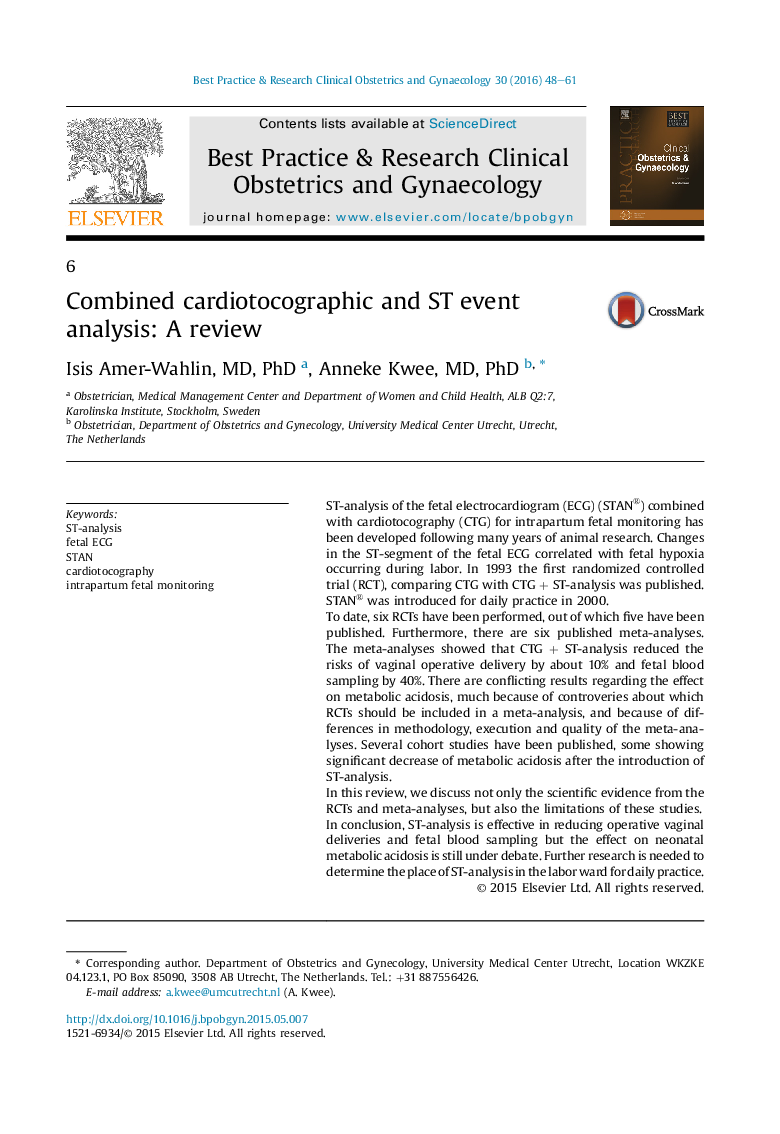| Article ID | Journal | Published Year | Pages | File Type |
|---|---|---|---|---|
| 6169227 | Best Practice & Research Clinical Obstetrics & Gynaecology | 2016 | 14 Pages |
â¢Five RCTs compared CTG + ST-analysis to CTG only.â¢Fetal blood sampling and standardized “STAN clinical guidelines” were used.â¢Fetal blood sampling and vaginal operative delivery was significantly reduced.â¢The effect on metabolic acidosis differs in the published studies.â¢The learning curve was not taken into account in any RCT.
ST-analysis of the fetal electrocardiogram (ECG) (STAN®) combined with cardiotocography (CTG) for intrapartum fetal monitoring has been developed following many years of animal research. Changes in the ST-segment of the fetal ECG correlated with fetal hypoxia occurring during labor. In 1993 the first randomized controlled trial (RCT), comparing CTG with CTGÂ +Â ST-analysis was published. STAN® was introduced for daily practice in 2000.To date, six RCTs have been performed, out of which five have been published. Furthermore, there are six published meta-analyses. The meta-analyses showed that CTGÂ +Â ST-analysis reduced the risks of vaginal operative delivery by about 10% and fetal blood sampling by 40%. There are conflicting results regarding the effect on metabolic acidosis, much because of controveries about which RCTs should be included in a meta-analysis, and because of differences in methodology, execution and quality of the meta-analyses. Several cohort studies have been published, some showing significant decrease of metabolic acidosis after the introduction of ST-analysis.In this review, we discuss not only the scientific evidence from the RCTs and meta-analyses, but also the limitations of these studies.In conclusion, ST-analysis is effective in reducing operative vaginal deliveries and fetal blood sampling but the effect on neonatal metabolic acidosis is still under debate. Further research is needed to determine the place of ST-analysis in the labor ward for daily practice.
